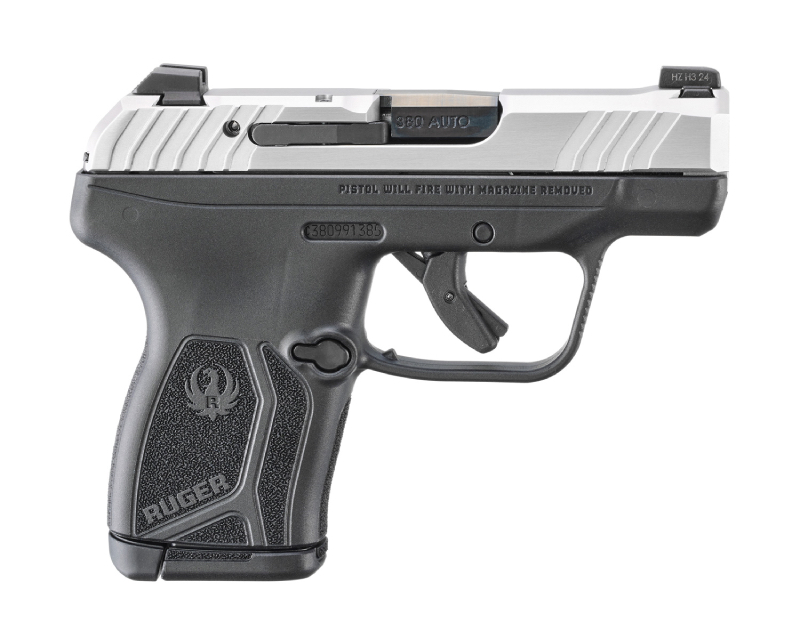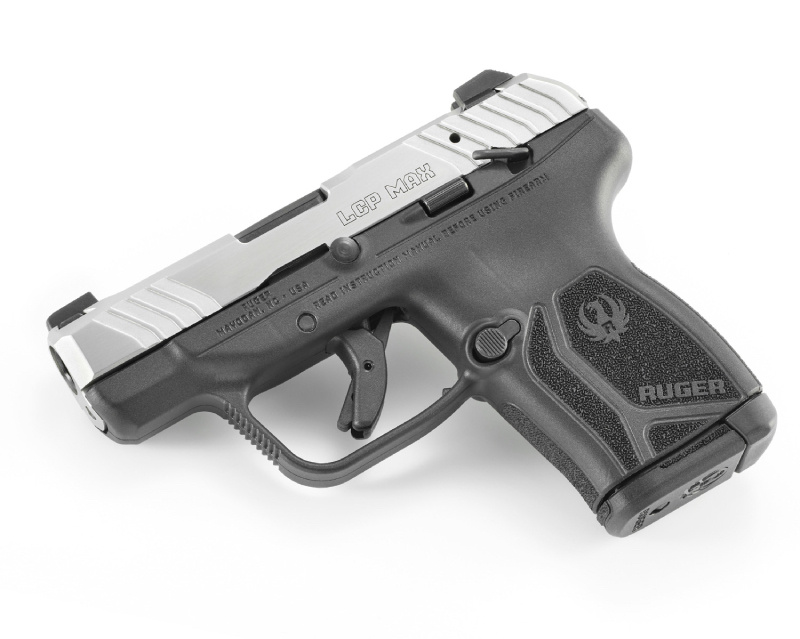Ruger Expands LCP MAX Lineup with Manual Safety Options
Author: Marko L. | Publish Date: Jun 16, 2025 | Fact checked by: Aleksa Miladinovic
Sturm, Ruger & Company, Inc. has announced the launch of two new LCP® MAX variants featuring integrated manual safety systems, expanding their popular concealed carry pistol series.

New Manual Safety Models
Model Specifications and Features
The company has introduced models 13749 and 13754, both equipped with a user-friendly manual safety positioned on the frame's left side for convenient operation. Model 13754 distinguishes itself with additional safety features including a magazine disconnect mechanism and a loaded chamber indicator positioned atop the slide, providing visual confirmation of chamber status.
Key Model Differences
- Model 13749: Standard manual safety configuration
- Model 13754: Enhanced with magazine disconnect and loaded chamber indicator

Design and Construction Details
Slide and Frame Characteristics
Both variants showcase a matte stainless steel slide with polished side panels that create sharp, well-defined cocking serrations. The textured grip frame ensures reliable handling with enhanced comfort and security during use.
Sight System Configuration
Front Sight Technology
The pistols feature tritium front sights with white outline borders, engineered for rapid target acquisition across various lighting conditions.
Rear Sight Design
The rear sight incorporates a generous U-notch configuration for simplified alignment, complemented by a square front face designed to facilitate one-handed cocking operations. The sight dovetails are manufactured to Bodyguard-pattern specifications, ensuring compatibility with aftermarket sight upgrades.
Enhanced Performance Features
Mechanical Improvements
The LCP MAX series incorporates several upgraded components including:
- Refined magazine feed lips
- Optimized feed ramp geometry
- Enhanced extractor design
- Advanced barrel cam configuration

Patented Barrel Cam Technology
The proprietary barrel cam geometry represents a significant engineering advancement, designed to delay unlocking sequence, reduce slide velocity, and minimize felt recoil compared to conventional .380 Auto pistols in the market.
Fire Control System
Secure Action™ Technology
Both models utilize Ruger's proven Secure Action™ fire-control system, which integrates a protected internal hammer with a bladed-safety trigger mechanism. This system delivers consistent performance with enhanced safety protocols.
Trigger Performance
The trigger system provides:
- Short, smooth pull operation
- Clean break characteristics
- Positive reset feedback
Standard Equipment and Accessories
Included Components
Each pistol ships with a comprehensive package including:
- One 10-round magazine
- Soft pocket holster
- Magazine loading tool
- Reversible magazine release for ambidextrous operation
Ergonomic Features
The reversible magazine release system accommodates both left and right-handed shooters, enhancing the pistol's versatility for diverse user preferences.
Market Positioning
These new manual safety variants address growing demand for enhanced safety features in concealed carry firearms while maintaining the compact profile and reliability that has made the LCP MAX series popular among concealed carry permit holders and law enforcement professionals.
| Specifications | LCP® MAX Manual Safety |
|---|---|
| CAPACITY | 10+1 |
| SLIDE MATERIAL | Stainless Steel |
| SLIDE FINISH | Matte Stainless |
| SLIDE WIDTH | 0.81" |
| MANUAL SAFETY | Yes |
| GRIP FRAME | Black, High-Performance, Glass-Filled Nylon |
| BARREL MATERIAL | Alloy Steel |
| BARREL FINISH | Black Oxide |
| BARREL LENGTH | 2.80" |
| OVERALL LENGTH | 5.17" |
| FRONT SIGHT | Tritium with White Outline |
| REAR SIGHT | Drift Adjustable |
| WEIGHT | 10.6 oz. |
| HEIGHT | 4.12" |
| GROOVES | 6 |
| TWIST | 1:16" RH |
| SUGGESTED RETAIL | $379.00 |
Author:
Marko Lalovic

Marko is a dedicated aviation enthusiast whose passion began with an unforgettable encounter with fighter jets at an air show in his home country. As an audiophile and sound engineer by training, Marko was initially captivated by the distinctive sonic signature of military aircraft—the thunderous roar of afterburners and the precise mechanical symphony of aviation systems. This auditory fascination evolved into a comprehensive interest in defense technology, particularly firearms engineering and ballistics acoustics.